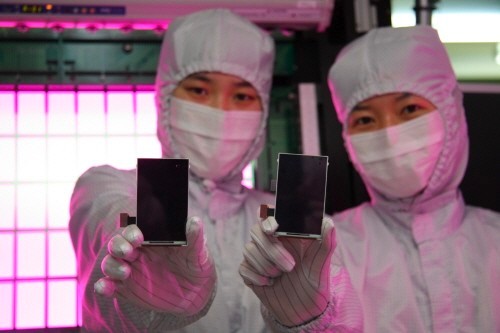
Samsung reshaping pixels to create ultra-dense HD displays

When it comes to hi-res displays, using traditional methods it is nearly impossible to squeeze more than 440 pixels per inch into a typically-zied smartphone screen. Samsung’s upcoming Full HD Super AMOLED display — said to be the centerpiece of the Galaxy S4 — just about reaches the limit. That screen measures 4.99 inches, but Samsung is looking into ways to bring a similar pixel density to smaller screen sizes.
How do they plan on accomplishing this? By reinventing the pixel. Current screen technology uses square pixels, and only so many can be crammed into a display before the rules of geometry take over. But those same rules of geometry are being used to reshape the pixel in a way that will allow for more on smaller screens, perhaps at a clip even greater than 440 ppi.
According to a report from DigiTimes, Samsung is experiminting with hexagonal and diamond-shaped pixels as a replacement for square pixels. But will the additional pixels be more than chum for the advertising department? It is said that the human eye maxes out at around 300 pixels, hence the Retina display moniker Apple has attached to its 326 ppi iPhone display. But in a smartphone race based on gigahertz, megapixels, and screen resolution, Samsung will do what it has to do get a leg up on the competition, even if the end result makes no technical difference to our eyes.
[via TechCrunch]
